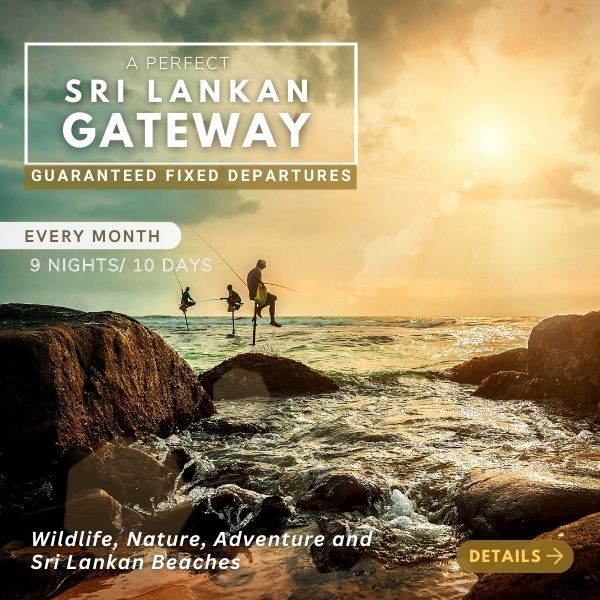Diving News In Sri Lanka
© Daily Mail, London
Sunday February 27, 2011
THE SUNDAY TIMES
World's coral reefs 'will be wiped out by 2050', researchers warn
Tens of thousands of miles of stunning coral reefs could be obliterated by 2050 due to pollution, climate change and overfishing, experts have warned. Virtually all of the world's most beautiful reefs from the Indian Ocean to Australia and the Caribbean are at 'dire risk' of being wiped out, researchers said in the starkest warning yet on coral reefs.
Environmentalists warned that the consequences for countries that depend on the reefs for food and income would be devastating. The threat emerged in the report 'Reefs at Risk' made by the World Resources Institute in Washington and 25 other organisations.
'Mounting pressures on land, along the coast and in the water converge in a perfect storm of threats to reefs,' Jane Lubchenco, administrator at the U.S. National Oceanic and Atmospheric Administration, said at a briefing. 'Since the last 'Reefs at Risk' report ... threats have gone from worrisome to dire.
'It's pretty clear that reducing greenhouse gas emissions, especially carbon dioxide, is absolutely necessary if we want any hope of preventing a lot of the dire situations that are presented in the report.'
Warmer seas caused by global warming; ocean acidification blamed on carbon dioxide pollution; shipping, overfishing, coastal development and agricultural run-off all pose a threat to coral reefs, says the report.
The last study, released in 1998, found nearly 60 percent of coral reefs were threatened by human activity. More than 500 million people around the world depend on coral reefs for food and income; the report estimated coral reefs provide £18billion a year in benefits.
The carbon dioxide emissions that fuel climate change also contribute to making oceans more acidic, which impedes coral formation. In addition, warmer sea surface temperatures cause damaging coral bleaching, the report said.
Local pressures include over-fishing, destructive fishing methods such as explosives or poison, pollution from farm chemical run-off, unchecked coastal development, ships that drag anchors and chains across the reefs and unsustainable tourism.
If these threats don't change, more than 90 percent of reefs will be at risk by 2030 and nearly all reefs will be at risk by 2050, the researchers found. More than 275 million people live within 18 miles of coral reefs. In more than 100 countries, coral reefs protect over 93,000 miles of shorelines.
The report identified 27 nations -- most in the Caribbean, the Pacific and the Indian oceans -- that are socially and economically vulnerable if coral reefs are degraded or lost. Among those 27, the nine most vulnerable are Comoros, Fiji, Grenada, Haiti, Indonesia, Kiribati, the Philippines, Tanzania and Vanuatu.
Local efforts to curb over-fishing and protect reefs are a known part of the solution, while limiting climate-warming emissions is more challenging, the advocates said.
The report's lead author Lauretta Burke said the situation was 'a perfect storm' of threats. She added: 'Make no mistake. This is a critical time for ocean eco-systems in general but especially for coral reefs.
'It will take a Herculean effort to rescue the current trajectory and leave a healthy eco-system to our children and grandchildren.'
By Gamini Mahadura – Galle
Thursday, June 25, 2009
Dailymirror
Shipwrecks found in sea off Kirinda
It is believed that more than 100 foreign ships have crashed onto reefs between the Great Basses and the Little Basses in the sea off Kirinda in the past. The Marine Archaeological Unit of the Asia Pacific Region, with their headquarters in Galle, having done research on the subject have discovered that these shipwrecks date back to the 17th and 18th centuries. They say they have discovered the archaeological remains of three ships. One of the ships was called the Bottle Ship and was about 23 metres in length and five meters in width and its wreckage has been lying in the seabed, which is more than six metres deep.
Archaeologists discovered two anchors and parts of the ship made of wood. They believe that it was a cargo ship carrying a consignment of bottles containing the trademark of a Ceylonese Company called Clarke Romer and Col. Ceylon. The company with its branches in Colombo and Kandy had been dealing with soft drinks. The English daily The Ceylon Examiner published in Colombo in 1846 carries an advertisement of the company. The advertisement is at present conserved in the Colombo National Museum. The wreckage of another ship, which is about 33 metres in length, was also discovered during research in the seabed nearly 16 metres deep. The ship comprising an engine and a large boiler was a cargo ship carrying copper. However, the anchor of the ships was not found.
Yet another ship that belonged to a Mogul king, who had more than two tons of silver coins on board when it hit the reef and went down in 1702AD, is also said to have been found. The researchers believe that the consignment of silver coins and about 20 artillery guns of the ship could still be in the seabed. A team of archaeologists is conducting further excavations on the instructions of Director General of Archaeology Dr. Senerath Dissanayake and Deputy Director of the Central Cultural Fund, Dr. Mohan Abeyratne.
By Prince Casinader
The Sunday Times
April 12, 2009
Batticaloa remembers the epic naval battle, in which two mighty nations pitted their strength against each other 67 years ago. Officials working inside the ancient Dutch fort, serving as the administrative centre, left their desks to view the battle using the ramparts as the grandstand.
Information had filtered through that a formidable Japanese armada had entered the Bay of Bengal under the command of the much feared Japanese Admiral, Naghmo, who was responsible for the successful raid on Pearl Harbour.
On receipt of information, Sir James Somerville, who commanded the Far Eastern Naval Fleet of Britain, was quick to issue orders to British warships huddling in Trincomalee harbour to take flight, along the east coast towards Batticaloa. The pride of these ships, the H.M.S. Hermes, an aircraft carrier, was accompanied by its sister ships – the Australian destroyer H.M.A.S. Vampire, the British Sergeant, and the corvettes Hollyhock and Athletane, among others.
Not far from the Batticaloa sand-bar lighthouse, like angry bees disturbed, came the Japanese planes zooming, diving in threes out of the sun, at 10.35 a.m. on April 9, 1942.
The administrative centre of the Batticaloa district was the Kachcheri, housed in the ancient fort. The British ships were no match for the continued waves of Japanese planes, and as the first bombs hit the deck of the Hermes, she began to sink. A touching tragic scene was the heroic stance of the ship’s captain, Captain Onslow, who as the ship was sinking, stood at the salute with the Union Jack flying, to go down with his ship, not far from the lighthouse.
Nineteen officers, including the brave captain, and 283 ratings were lost, despite a British hospital ship picking up some survivors. Among the survivors was Commander L.K.A. Black who gave details of the downing of this majestic aircraft carrier of the British navy.
He said how from the sun, in waves of three, the planes came in to the attack at a time when the Batticaloa light house could be seen Commander Black on his return to England after the war, rose to become a judge and commissioner of no less a prestigious font of justice, the 'Old Bailey'. He would unfailingly every year insert an 'In Memoriam' in The Times paper, "in memory of my gallant captain and my shipmates of H.M.S. Hermes, who paid the supreme sacrifice”.
Several corpses of sailors were thrown up and among them were three found at the 'sand bar'. The colonial authorities had to tempt some labourers with spirits to retrieve them. A few members of the public, among whom I was then a schoolboy, attended a burial ceremony at the old cemetery at Alayadicholai. There were three crosses with the names of three sailors -- K.A. Vatcher, S.M. Lewis, and the third, the 'Unknown Sailor'. Unlike the other two, his identity disc had slipped off his wrist.
It is said that some villagers from the nearby fishing village of Navaladi went out at night and began looting parts of the sunken ship. It is said they even used dynamite to break open some parts.
Some of us tipped off the police. A young sub inspector whom we knew as Kathirgamanathan lay in ambush and pounced on them as they came to shore with the booty lashed on to catamarans. The vandals fled and made good their escape leaving their haul. A propeller and some other parts lay at the Batticaloa Police Station where I took some of my students to see it and took a photograph. Alas! these items of much historical value were auctioned for a mere song.
Some years later, a research team from the Blue Water Corporation coming to Batticaloa on a project to find the breeding places of a particular species of either whales or sharks, discovered a species resting in the shadows of this ship.
Batticaloa has been very remiss in caring of ancient artefacts and though some years ago, the Kachcheri opened a unit for the care of historical and archaeological artefacts, it seems to be in the doldrums today.












